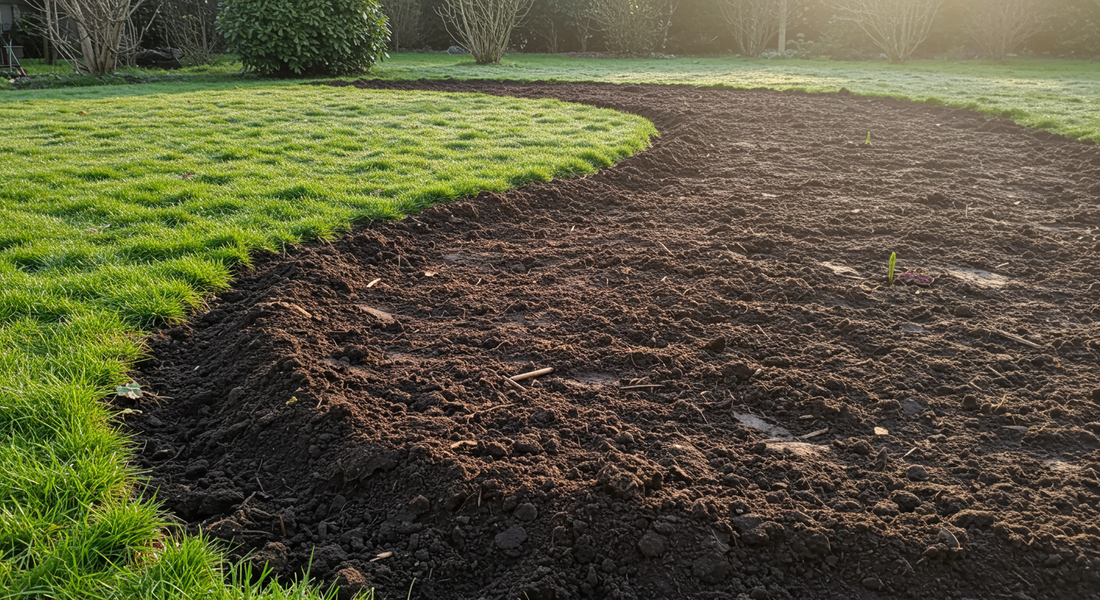
The Ultimate Spring Yard Cleanup Checklist: Waking Up Your Garden:The Ultimate Spring Yard Cleanup Checklist
Share
As the last of the snow melts and the days grow longer, a sense of renewal fills the air. Your yard, dormant for months, is ready to wake up. But shaking off winter's slumber requires more than just waiting for the sun. A thorough spring yard cleanup is one of the most crucial investments you can make for the health and beauty of your landscape.
It sets the stage for a season of lush growth, vibrant blooms, and a healthy lawn by removing winter debris, preventing disease, and giving plants the best possible start. This comprehensive spring garden checklist will guide you step-by-step through the process, turning a daunting task into a manageable and rewarding project.
Phase 1: The Big Cleanup
Before you can prepare for new growth, you must clear away the old. This initial phase is all about tidying up the canvas of your yard and addressing any issues left behind by winter weather.
-
Raking and Debris Removal: Winter winds and snow can leave a surprising amount of clutter. Your first task is to thoroughly rake all lawn and garden areas. Remove any matted leaves, fallen twigs, and other debris. This isn't just for looks; a thick layer of wet leaves can suffocate the grass beneath, promoting mold and preventing new shoots from emerging.
-
Gutter Cleaning: Clogged gutters are a common casualty of winter. Now is the time to clear out all the leaves and debris that have accumulated. Clean gutters ensure that spring rains are channeled away from your home's foundation, preventing potential water damage and discouraging pests from making a home in the buildup.
-
Assess Winter Damage: Take a walk around your property and inspect trees and shrubs. Look for any branches that are broken, dead, or damaged from snow and ice. Prune these away to prevent them from becoming a hazard and to encourage healthy new growth.
Phase 2: Preparing Garden Beds
With the general cleanup done, it’s time to focus on the areas where your flowers and vegetables will grow. This is essential prep work for a successful planting season.
-
Remove Winter Mulch and Old Annuals: Gently rake away the heavy winter mulch from your perennial beds to allow the soil to warm up and new shoots to push through. Pull out any dead annuals from last year that you may have missed in the fall.
-
Weed and Amend the Soil: Tackle weeds now while they are small and their roots are shallow. This early spring lawn care and garden prep will save you a major headache later. Once weeded, enrich your soil by working in a few inches of compost or other organic matter. This replenishes nutrients lost during the previous season and improves soil structure.
-
Edge Your Beds: For a crisp, professional look, use a spade or edger to create a clean line between your garden beds and your lawn. This simple step creates a beautiful definition and helps to keep grass from creeping into your garden areas.

Phase 3: Waking Up the Lawn
A lush, green lawn is the cornerstone of many beautiful yards. How you prepare lawn for spring in these first few weeks will determine its health for the rest of the year.
-
The First Mow: Don't rush to mow. Wait until the lawn has dried out and the grass has begun to actively grow to about 3 inches high. For the first mow of the season, set your mower blades high, trimming only the top third of the grass blades.
-
Aerate and Dethatch: If your soil is compacted or you have a thick layer of thatch (more than half an inch), now is a good time to aerate. This process pulls small plugs of soil from the lawn, allowing air, water, and nutrients to penetrate deep into the root zone. Dethatching removes the layer of dead grass that can choke new growth.
-
Apply Pre-emergent and Fertilizer: To prevent crabgrass, apply a pre-emergent herbicide before the soil temperature consistently reaches 60°F (usually when forsythia bushes start to bloom). Follow up with a balanced spring fertilizer to give your lawn the nutrients it needs to green up and grow strong.
Phase 4: Tools and Equipment Tune-Up
Your cleanup and gardening efforts are only as good as the tools you use. A little maintenance now ensures your equipment is ready and safe for the season ahead.
-
Hand Tool Maintenance: Inspect your shovels, rakes, and pruners. Clean off any rust, sharpen dull edges, and apply a light coat of oil to metal parts to prevent future rusting and to moving parts to ensure smooth operation.
-
Mower Maintenance: Get your lawnmower ready for its first run. Change the oil, replace the spark plug, clean the air filter, and, most importantly, sharpen the mower blades. A sharp blade makes a clean cut, which is healthier for the grass.

